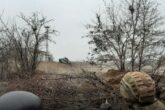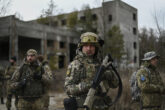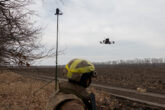October 27, 2014
Rule #1 and the Cult of Invulnerability
On the morning of December 7, 1941, the USS Arizona, with 13.5 inches of armor at her waterline, 18 inches of armor on her turrets, and watertight compartments throughout her hull, was one of the most survivable ships in the world, that today continues to rest upon the bottom of Pearl Harbor with over a thousand honored dead still onboard. The USS Cole, equipped with the Aegis defense system, represented a $1.3 billion dollar investment in survivability in today’s dollars. She was designed to defend herself and other ships around her against the latest in air, surface and subsurface threats. Yet on October 12, 2000, a small motorboat filled with explosives nearly sank the ship as she refueled in Yemen.
There is no such thing as invulnerability. Many defense investments are misplaced, but near the top of the list are the billions spent chasing the illusion that ships can take a hit in a modern, hypersonic warfare environment and keep fighting. DOD must face the unpleasant reality that we will never build an indestructible ship.
Read the full article at Information Dissemination.
More from CNAS
-
Defense / Transatlantic Security
When Defense Becomes Destruction: Austria-Hungary’s Mistake and Ukraine’s RiskThis article was originally posted on War on the Rocks. The southeastern Polish city of Przemyśl, with its elegant 19th century Habsburg-era train station, remains one of the ...
By Franz-Stefan Gady
-
Defense / Transatlantic Security
Ukraine’s Catch-22 MomentThis article was originally published in the Financial Times. In Joseph Heller’s wartime classic, Catch-22, the protagonist Yossarian seeks out the US army surgeon Doc Daneeka...
By Franz-Stefan Gady
-
CNAS Insights | Budgetary Own Goals Undermine “Speed and Volume”
On November 7, Secretary of Defense Pete Hegseth laid out a plan to overhaul the Department of Defense’s (DOD’s) acquisition system. Placing an emphasis on delivering new capa...
By Philip Sheers, Carlton Haelig & Stacie Pettyjohn
-
Drones: Who Is Making the New Weapons of War?
From Ukraine and Russia to Gaza and Sudan, drones have become a key weapon of war. Which companies are making them, and profiting from this rapidly expanding but controversial...
By Stacie Pettyjohn




